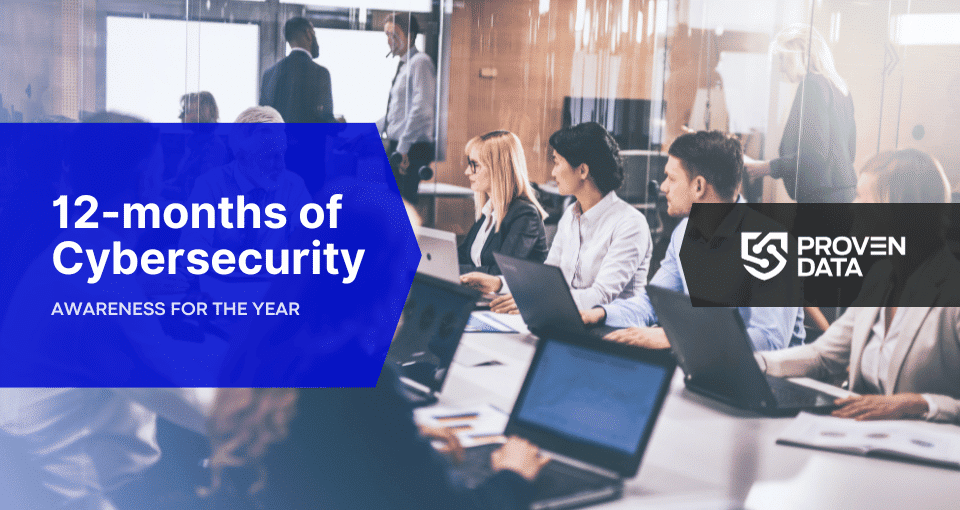Created by the Department of Homeland Security and the National Cyber Security Alliance in 2004, the National Cyber Security Awareness program has the goal of creating awareness and sharing resources for people and businesses across the globe to be familiarized with cybersecurity and data protection. It is the foundation of the ongoing efforts to battle cybercrime and prevent other digital threats from attacking both personal information and businesses.
However, cybersecurity awareness doesn’t end in October and businesses and individuals must apply the acquired knowledge the entire year.
Recognized as a 2018 National Cybersecurity Awareness Month Champion, Proven Data has been committed to helping achieve this goal by giving our support and resources to share more knowledge in preventing cyber attacks like phishing.
Cyber incidents continue to get more complex and modernized, and as a result, our attempt to combat these challenges will be met by our desire to stay educated and share knowledge on impeding bad actors.
How to promote national cyber security awareness throughout the year
There are far too many individuals and businesses who simply lack resources and information on cyber security solutions that could help prevent them from being the victim of a cyber attack.
Cybersecurity is an ongoing effort that requires everyone in an organization to be part of it.
Proven Data has always been an advocate for businesses to create an environment where cyber safety is practiced by all employees and encourages a cyber security culture. Companies should focus on having employees better trained and aware of the current events happening with data theft and business email compromise.
Here are effective ways to promote cybersecurity awareness throughout the year:
Educate employees about cybersecurity
Begin educating employees about cybersecurity during the onboarding process. Regular cybersecurity training can help employees stay up-to-date on the latest threats and best practices. Training should be engaging and informative to ensure that staff understand what is required of them and the importance of their role in safeguarding the organization’s sensitive data.
Plus, bring the leaders to ensure the training’s success. Leaders can create powerful change in an organization, but they have to be on board first. Encourage leaders to prioritize cybersecurity and lead by example. This will help to emphasize the importance of cybersecurity to your whole company.
Apply a variety of communication methods
Use a variety of communication methods to keep cybersecurity top of mind for employees. This can include sending out helpful articles, reminding others of useful tips, and even rewarding employees who have caught malicious emails.
Also, determine which activities inspire the most awareness and participation, and use that information to create a year-long training calendar. Continue to keep cybersecurity top of mind with new activities, which can be particularly helpful as new people join your team.
Create a culture of cybersecurity
Organizations must remember that culture can also be used as a cybersecurity tactic and tool. It must be continually assessed, strengthened, and adapted. Cybersecurity information must be delivered clearly to ensure that employees across the company understand the importance of safe online behavior. Messaging is critical to building engagement and fostering a cybersecurity culture.
Cultivating a cybersecurity culture should start from the top. C-suite executives cannot expect their employees to heed cybersecurity concerns if it is not a key priority for the management team. Encourage executives to take part in cybersecurity training and enforce security policies. This will help to create a culture of cybersecurity that tasks every member of an organization with embracing attitudes and beliefs that drive secure behaviors.
Most importantly, ensure a culture of responsibility. In an established cybersecurity culture, employees will accept responsibility at an individual level for supporting security. Plus they will have the training and knowledge to prevent attacks and to act in case of an incident. This collective approach will help to create a culture of cybersecurity that is proactive and effective the entire year.







